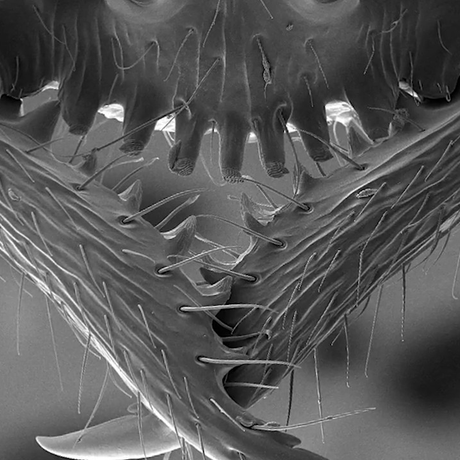Science News
Wealthy Homes are Rich in Bugs

Wealthy people have it all, says a study published last week by Academy researchers and their colleagues. Well, that’s not exactly what the study says. The team of entomologists (yep, those folks who study creepy-crawlies) found that wealthier neighborhoods host greater insect biodiversity than ’hoods in lower-income neighborhoods. That means, contrary to what you (or those one-percenters) might think, rich people have more species of bugs in their homes.
We’ve covered the book lice, drain flies, and carpet beetles that live in most homes—regardless of how clean the house, or how often the exterminator comes to visit. But Misha Leong, Michelle Trautwein, and their colleagues are digging deeper into understanding our arthropod roommates. Their goal is to search homes on all seven continents to find patterns in this insect-human connection. Past expeditions include Sweden, the Peruvian Amazon, and San Francisco, and future trips include Australia, Madagascar, China, and Antarctica through 2017. For this new study, the team surveyed homes in Raleigh, North Carolina.
“The sheer amount of life thriving within your home—under carpet, in closets—is astonishing,” says Leong, lead author and post-doctoral researcher at the Academy. “Now we’re learning that neighborhood affluence was one of the primary predictors for the number of different bug types—mostly non-pests—living inside, which really surprised me.”
The teams says that the likely mechanism for this species richness is that homes in wealthier neighborhoods host a greater diversity of plants that, in turn, allowed for a greater variety of plant-loving arthropods to find their way inside and thrive indoors. For affluent homes without significant plant coverage, the team still found high arthropod diversity, which suggests that the actual neighborhood makes a big difference.
“Seeing how these community-wide planning decisions cascade through the neighborhood and into homes is fascinating,” says Leong. “Besides parks and communal landscaping, the decisions made at the micro-scale of individual property owners collectively scales up. This influences the ecological dynamics within their respective neighborhoods and cities, which can then impact the biodiversity you find in your bedrooms and basement.”
But don’t worry, fancy friends. Roughly 100 different species of arthropods are found inside the average home and most of these bugs are not pests. “Even though we spend billions of dollars each year to control for cockroaches, ticks, termites and other infestations, there are still a number of overlooked, benign species,” says Leong. “Don’t panic—most bugs aren’t the problem roommates we make them out to be.”
Image: ©Matt Bertone of North Carolina State University


